Understanding Bollards and Cleats
Definition and Purpose of Bollards – Exploring what bollards are and their role in safety and security
Bollards and cleats are often overlooked, yet they play a crucial role in urban safety and maritime security. Bollards, in particular, are sturdy posts designed to protect pedestrians, buildings, and vehicles from accidental or deliberate impact. Their primary purpose is to create a physical barrier that prevents vehicular intrusion into sensitive areas, such as pedestrian zones, parking lots, or government buildings. This simple yet effective device helps reduce accidents and enhances overall safety in busy environments.
Understanding the various types of bollards and cleats is essential for selecting the right solution. Some bollards are fixed, offering permanent protection, while others are retractable, allowing flexibility when needed. Cleats, on the other hand, are specialised fixtures used in maritime settings to secure vessels. Their purpose extends beyond merely holding boats in place—they are vital for ensuring safety during docking and mooring operations. The distinction between these two devices highlights how both bollards and cleats serve specific roles in their respective contexts, providing structure and security where it matters most.
Definition and Purpose of Cleats – Understanding what cleats are and their applications in maritime and dockside settings
In the bustling world of maritime logistics and dockside activities, cleats are the unsung heroes that keep vessels secure and operations running smoothly. These specialised fixtures are more than just simple hooks; they are the backbone of safe mooring and docking procedures. Crafted from durable materials such as stainless steel or heavy-duty plastic, cleats are designed to withstand the relentless forces of wind, water, and tugging ropes.
Understanding the applications of cleats reveals their vital role in maritime settings. Whether on a small fishing boat or a large commercial dock, cleats facilitate the secure fastening of ropes, ensuring vessels remain steadfast in sometimes unpredictable conditions. They are often arranged in pairs or groups along piers and docks, providing multiple points of attachment for varied operational needs.
Some common types of cleats include:
- Ball cleats, which provide a rounded grip for easy tightening and releasing
- Boat cleats, specifically designed for marine environments and resistant to corrosion
- Deck cleats, versatile fixtures used in both recreational and professional maritime applications
In essence, cleats are indispensable fixtures that blend functionality with resilience, ensuring safety and stability in maritime operations. When considering bollards and cleats, recognising their unique roles in their respective domains highlights how crucial these fixtures are to urban safety and maritime security alike.
Differences Between Bollards and Cleats – Key distinctions in design, function, and materials
When it comes to safeguarding urban spaces and maritime assets, understanding the difference between bollards and cleats is crucial. While both serve as steadfast fixtures in their respective worlds, their design, function, and materials couldn’t be more different—yet both are equally vital in their domains.
Bollards are robust, often towering structures designed primarily for security and traffic control. Made from materials like steel or concrete, they resist vehicle impacts and prevent unauthorised access. Cleats, on the other hand, are specialised fixtures crafted to secure ropes and mooring lines in maritime environments. Typically manufactured from corrosion-resistant materials like stainless steel or high-strength plastic, cleats offer a reliable grip in the face of relentless water and weather conditions.
Understanding these distinctions is more than mere semantics. For example, in dockside settings, you’ll find cleats arranged in groups to facilitate mooring, while bollards stand sentinel at entrances and along walkways, ready to thwart any vehicular misadventure. Recognising these functional differences ensures optimal safety and operational efficiency—because in the world of bollards and cleats, knowing your fixtures can make all the difference.
Types of Bollards and Cleats
Types of Bollards – Fixed, removable, decorative, and security bollards
In the world of urban design and maritime infrastructure, the variety of bollards and cleats is genuinely astonishing. These essential fixtures possess a remarkable ability to blend function with aesthetic appeal, transforming utilitarian objects into elements of visual storytelling. Among the most intriguing are the different types of bollards—each crafted with purpose and precision. From fixed bollards that stand unwavering in their stance to removable ones designed for flexibility, their forms serve distinct needs in safeguarding spaces or guiding traffic.
Decorative bollards, often adorned with intricate patterns or artistic finishes, elevate the environment while fulfilling security or delineation roles. Meanwhile, security bollards are engineered with robust materials to withstand impact, protecting pedestrians and property alike. When selecting bollards and cleats, understanding these varied types helps ensure the right fit for each setting, whether it’s a bustling dockyard or a quiet city centre.
- Fixed bollards permanently anchored to the ground, offering steadfast protection.
- Removable bollards, which can be repositioned or removed for access or events.
- Decorative bollards, blending aesthetic charm with functional needs.
- Security bollards, designed to absorb impact and enhance safety in high-risk areas.
Types of Cleats – Marine cleats, deck cleats, and industrial cleats
Marine environments demand specialised equipment, and the right cleats can make all the difference. Marine cleats, for instance, are crafted from corrosion-resistant materials like stainless steel or heavy-duty plastic, ensuring longevity in harsh conditions. These cleats are designed to securely fasten ropes, preventing ships from drifting away. Deck cleats, common on boats and docks, come in various shapes—from traditional “T” forms to more modern designs—offering reliable grip and ease of use. Industrial cleats, meanwhile, are built to withstand intense pressure and frequent handling, often featuring reinforced construction for demanding maritime operations.
When selecting cleats, consider the specific needs of the environment. For example, a bustling marina might benefit from a mix of deck and industrial cleats to optimise both safety and operational efficiency. The durability of these fixtures is essential, especially when exposed to the elements. Just like bollards and cleats are vital in urban safety and maritime stability, choosing the right type of cleat ensures secure mooring and seamless docking operations.
Material Variations – Steel, rubber, stainless steel, cast iron, and weather-resistant options
When it comes to securing environments—whether bustling docks, urban streets, or industrial sites—the choice of bollards and cleats is vital. The material variation in these fixtures not only affects their durability but also determines their suitability for specific applications. Steel bollards, for example, are renowned for their robustness and resistance to vehicle impacts, making them ideal for high-security zones. Meanwhile, rubber bollards provide excellent flexibility and are often used in areas requiring gentle protection or pedestrian safety, absorbing shocks with ease.
In the realm of cleats, material selection plays a similarly crucial role. Marine cleats, crafted from corrosion-resistant stainless steel or heavy-duty plastics, stand up against harsh marine environments, ensuring longevity and performance. Deck cleats, often made from cast iron or aluminium, combine strength with ease of handling, while industrial cleats tend to feature reinforced steel constructions to withstand intensive use.
For those seeking versatility, a combination of material options can be considered. Here are some common variations:
- Stainless steel – corrosion-resistant and durable, perfect for maritime and outdoor settings.
- Cast iron – traditional and highly reliable, often used in urban infrastructure.
- Rubber – flexible and shock-absorbing, suitable for pedestrian zones and low-impact areas.
- Weather-resistant plastics – lightweight, resistant to corrosion, and easy to maintain.
Understanding these material differences helps in selecting the right bollards and cleats to meet specific safety, security, and operational needs. Whether for maritime safety or urban security, the durability and functionality of these fixtures are fundamental in creating resilient environments that stand the test of time.
Materials and Construction
Common Materials Used – Durability, corrosion resistance, and aesthetic appeal
In the realm of urban fortifications and maritime mastery, materials are the silent guardians that determine the longevity and allure of bollards and cleats. When steel meets the elements with unwavering resolve, it transforms into a stalwart sentinel—resisting corrosion and bearing the weight of countless seasons. Stainless steel, in particular, offers a gleaming resilience, its surface dancing with light while standing firm against the relentless assault of salt and moisture.
For applications demanding flexibility and shock absorption, rubber emerges as a champion—its resilience absorbing impacts without sacrificing aesthetic charm. Cast iron, with its antique appeal, lends a timeless charm to decorative bollards, while weather-resistant plastics add a modern touch of durability in marine and dockside environments. The choice of materials isn’t merely about function; it’s an ode to durability, corrosion resistance, and visual harmony that elevates the setting’s character.
- Steel – the robust backbone for security and durability
- Stainless steel – corrosion-resistant splendour for maritime environments
- Cast iron – vintage charm with formidable strength
- Rubber and plastics – adaptable, impact-absorbing, weather-resistant options
Each material plays a pivotal role in shaping the narrative of bollards and cleats—ensuring they stand resilient through storms and time, their beauty and strength echoing the craftsmanship woven into their very core.
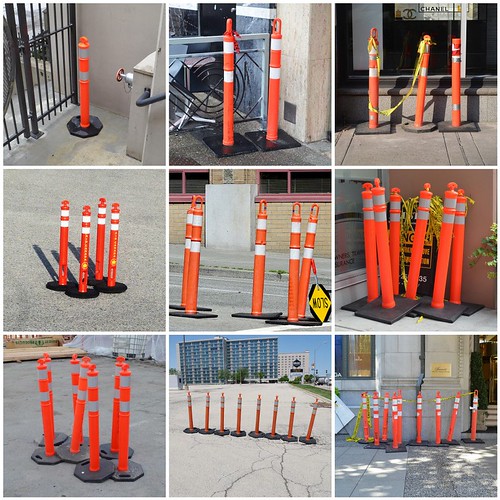
Design Considerations – Weight, stability, and installation requirements
Choosing the right materials and construction design for bollards and cleats can mean the difference between resilience and failure. The weight of these fixtures impacts their stability—heavier bollards are less likely to be moved or toppled, especially in high-traffic areas or rough weather. Stability is crucial; a well-anchored bollard or cleat must withstand forceful impacts and environmental stressors over time.
Installation requirements vary based on the intended application. For example, fixed bollards demand deep, secure foundations, while removable options offer flexibility but may need additional fixtures for stability. When planning your setup, consider:
- Surface type and condition
- Expected load and impact forces
- Environmental factors such as saltwater exposure or freeze-thaw cycles
Properly designed, bollards and cleats should integrate seamlessly into their surroundings—balancing weight, stability, and ease of installation. This thoughtful approach ensures longevity, safety, and aesthetic harmony in any setting. Material choice plays a pivotal role here; from cast iron’s vintage appeal to stainless steel’s corrosion resistance—each element is a vital piece of the puzzle that guarantees your fixtures stand resilient through time and storm.
Innovations in Materials – Sustainable and eco-friendly options
As the world shifts towards greener solutions, the materials used for bollards and cleats are also evolving. Sustainable and eco-friendly options are now at the forefront of innovative design, ensuring that safety and durability don’t come at the expense of the environment. Recycled steel and aluminium not only reduce waste but also offer remarkable strength and longevity, making them ideal choices for demanding settings.
In addition, natural materials like sustainably harvested timber are gaining recognition for their aesthetic appeal and environmental benefits. These materials, combined with advanced construction techniques, create bollards and cleats that are both resilient and visually harmonious within their surroundings. Incorporating environmentally conscious options demonstrates a commitment to ecological stewardship while maintaining the fixtures’ functional integrity.
Furthermore, emerging construction innovations include the use of composite materials—blends of recycled plastics and fibres—that deliver lightweight stability and resistance to corrosion. These cutting-edge solutions are transforming how bollards and cleats perform in diverse environments. For instance, weather-resistant composites can withstand harsh coastal conditions, making them a sustainable choice for maritime applications.
Applications of Bollards and Cleats
Urban and Public Spaces – Traffic management, pedestrian safety, and aesthetics
Urban and public spaces are more than just zones for movement—they’re expressions of city design and safety. Bollards and cleats play a vital role in shaping these environments, balancing functionality with aesthetics. Properly placed bollards can prevent vehicle intrusion, safeguarding pedestrians while maintaining visual harmony. Meanwhile, cleats are essential in maritime areas, ensuring secure mooring and smooth dockside operations.
In bustling city streets, bollards are often used to manage traffic flow and protect vulnerable zones. They can be installed in a variety of styles—from sleek, decorative designs to robust security models—tailored to the specific needs of the space. Cleats, on the other hand, are indispensable in waterfront settings, offering reliable anchoring points that withstand harsh marine conditions.
Consider these common applications:
- Traffic management in congested city centres
- Pedestrian zones where safety is paramount
- Marinas and docks requiring durable cleats for vessel mooring
Both bollards and cleats are crucial for enhancing safety and operational efficiency. Their strategic integration ensures that urban environments are not only functional but also visually appealing, blending security with style seamlessly.
Maritime and Dockside Operations – Securing vessels and mooring solutions
In the relentless dance of maritime commerce, securing vessels and maintaining smooth dockside operations hinge on the strategic deployment of bollards and cleats. These seemingly humble fixtures are the silent sentinels of safety, their resilience tested daily by the weight of history and the unforgiving marine environment. The right cleat, expertly anchored, transforms a simple mooring point into a bastion of stability, ensuring that ships remain steadfast amid turbulent waters.
For maritime and dockside operations, the application of bollards and cleats transcends basic function. They serve as the backbone of vessel safety, with each mooring line meticulously fastened to withstand currents, weather, and the relentless pull of ships. An array of marine cleats—deck cleats, industrial cleats, and specialised models—are designed to endure the corrosive assault of saltwater, embodying durability and precision craftsmanship. Meanwhile, bollards, often made from stainless steel or weather-resistant cast iron, anchor the entire mooring system, balancing force with resilience.
In environments where operational efficiency is paramount, understanding the nuanced roles of bollards and cleats becomes essential. They are not mere fixtures but integral components that uphold safety and optimise docking procedures. Their strategic placement and material choice can turn a chaotic waterfront into a symphony of order, trust, and strength—testament to the quiet power of well-designed mooring solutions.
Industrial and Commercial Use – Heavy-duty anchoring and safety barriers
In the bustling world of industrial and commercial logistics, where heavy machinery and massive vehicles collide in a symphony of clanging metal, bollards and cleats stand as the unsung champions of safety. These robust fixtures are not just decorative elements or simple mooring points—they are the backbone of secure operations, ensuring that everything from freight trucks to construction equipment remains firmly in place. With the right combination of durability and strategic placement, bollards and cleats transform chaotic work sites into bastions of organisation and safety.

When it comes to heavy-duty anchoring and safety barriers, the versatility of bollards and cleats is truly unmatched. Industrial cleats, for instance, are engineered to withstand relentless tugging from heavy loads, while bollards—often crafted from stainless steel or cast iron—serve as resilient anchors that resist corrosion and impact. Whether used to secure large cargo containers or to delineate safe pedestrian zones, these fixtures embody strength and reliability. Their application extends beyond mere functionality; they also contribute to the aesthetic coherence of industrial landscapes, providing a sense of order amidst the chaos.
In environments demanding maximum security and efficiency, understanding the nuanced roles of bollards and cleats becomes imperative. For example, industrial cleats can be installed in a variety of configurations, including:
- Heavy-duty marine cleats for vessel mooring
- Deck cleats designed for quick-release applications
- Industrial cleats integrated into loading bays for seamless operations
Meanwhile, bollards serve as formidable physical barriers, preventing unauthorised access and protecting vital infrastructure. Their material variations—ranging from rubber for flexibility to weather-resistant stainless steel for longevity—allow customisation to meet specific operational needs. Whether used to shield pedestrians from moving vehicles or to secure heavy machinery, bollards and cleats are the silent guardians of industrial safety.
Installation and Maintenance Tips
Proper Installation Practices – Surface preparation, anchoring, and safety tips
Proper installation of bollards and cleats is crucial to ensure their longevity and effectiveness. Surface preparation is the first step; a clean, level foundation provides stability and prevents uneven wear. When anchoring bollards and cleats, selecting the right fixings is essential—whether it’s concrete anchors, bolts, or specialised fasteners—each tailored to the material and environment. Safety should never be overlooked; always wear protective gear and double-check measurements before fixing into place.
For optimal performance, consider the environment—maritime bollards, for example, require corrosion-resistant coatings, while urban bollards demand impact-resistant materials. During installation, avoid common pitfalls such as improper alignment or insufficient anchoring depth, which can compromise safety and durability. Regular maintenance involves inspecting for rust, cracks, or loosening, especially in exposed settings.
- Ensure surface is free from debris and moisture before installation.
- Use appropriate fasteners designed for the specific material and load requirements.
- Periodically check for signs of wear or corrosion, replacing components as needed.
In the world of bollards and cleats, meticulous installation and ongoing maintenance are the silent guardians of safety, security, and enduring performance.
Maintenance and Longevity – Cleaning, rust prevention, and repairs
Even the sturdiest bollards and cleats can become flimsy if neglected—think of them as the unsung heroes of safety that silently endure the elements and wear and tear. Regular cleaning is essential; salt, dirt, and grime are the arch-nemeses of longevity, especially for maritime bollards exposed to relentless seawater. A simple scrub with fresh water and mild detergent can work wonders, preventing rust and corrosion from taking hold. For those stubborn spots, a wire brush or specialised rust remover can be your allies in the ongoing battle against decay.
To keep bollards and cleats performing at their peak, periodic inspections are a must. Look out for signs of rust, cracks, or loosened fastenings—these are warning signals that maintenance is overdue. Applying protective coatings or specialised anti-corrosion paints adds an extra layer of defence, extending the lifespan considerably. For marine environments, corrosion-resistant coatings are a non-negotiable, turning the tide against saltwater assault. When repairs are needed, replacing damaged fasteners and components ensures safety remains uncompromised. After all, a well-maintained bollard or cleat isn’t just about aesthetics; it’s about safeguarding people, property, and cargo with unwavering reliability.
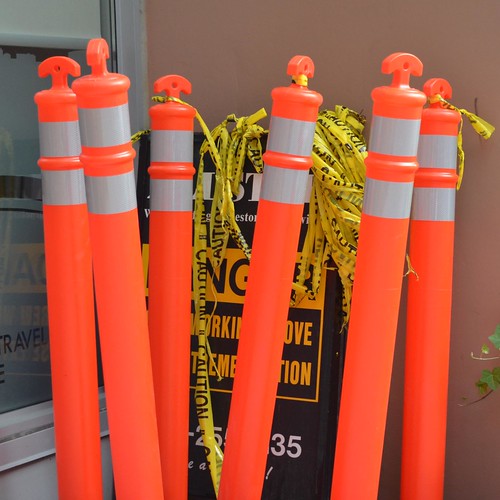
Regulatory Compliance – Standards and codes to consider
In a landscape where safety and compliance are paramount, understanding the regulatory standards governing bollards and cleats is essential. These fixtures are not merely functional; they are integral to safeguarding lives, property, and operational efficiency. Ensuring that bollards and cleats adhere to local and international standards—such as ISO, BS, or ASTM—can mean the difference between compliance and catastrophe. Regulatory frameworks often specify load capacities, material requirements, and installation protocols, all designed to withstand the demanding conditions they face daily.
To navigate this complex terrain, a meticulous approach to installation is crucial. Proper surface preparation, precise anchoring, and adherence to manufacturer guidelines not only optimise performance but also guarantee long-lasting safety. For organisations managing urban spaces, maritime operations, or industrial sites, a comprehensive understanding of these standards ensures that bollards and cleats are both compliant and resilient.
- Verify that the chosen bollards and cleats meet the relevant safety standards and certifications.
- Ensure installation practices comply with local building codes and environmental considerations.
- Regularly review updates to regulations that might impact maintenance or upgrade requirements.
Ultimately, regulatory compliance transforms simple fixtures into steadfast guardians of order and protection—an elegant testament to the pursuit of safety that never compromises on style or substance. When selecting bollards and cleats, appreciating the weight of standards and codes elevates their role from mere equipment to symbols of unwavering security.
Choosing the Right Bollards and Cleats
Factors to Consider – Load capacity, environment, security needs
Choosing the right bollards and cleats hinges on a nuanced understanding of several critical factors. First and foremost, load capacity is paramount—overestimating can lead to precarious stability, while underestimating might result in catastrophic failure. Consider the environment as well; coastal locations demand weather-resistant materials like stainless steel or specialised rubber, as corrosion is relentless. Security needs further influence your choice—whether you require bollards for vehicle control or cleats to moor high-value vessels, the strength and design vary considerably.
In some scenarios, a straightforward list clarifies decision-making:
- Assess anticipated load and pressure.
- Evaluate environmental conditions—rain, salt, or urban pollution.
- Determine security requirements—deterrent versus functional use.
Ultimately, selecting suitable bollards and cleats involves balancing these considerations with aesthetic preferences and installation practicality. The right combination ensures longevity, safety, and seamless integration into your operational environment.
Custom vs. Standard Options – When to opt for tailored solutions
Choosing between standard and custom bollards and cleats often feels like embarking on a quest through an enchanted forest. While off-the-shelf options can meet many needs swiftly and cost-effectively, tailored solutions offer a level of finesse and resilience that standard models simply cannot match. When your environment demands a unique blend of strength and aesthetic appeal, it pays to explore bespoke options that are designed with your specific security and operational requirements in mind.
Custom bollards and cleats can be meticulously crafted to suit complex specifications, whether it’s integrating specialised materials to withstand extreme weather conditions or creating designs that complement your visual identity. For instance, in high-security settings or maritime environments, these specialised solutions ensure optimal durability—something that standard options might lack. If your project involves unique spatial constraints or heightened security needs, opting for custom solutions becomes an investment in longevity and safety.
Budget Considerations – Balancing quality and cost-effectiveness
Striking the perfect balance between quality and cost when selecting bollards and cleats can feel like walking a tightrope through a bustling marketplace. While opting for the most affordable options might seem tempting, it often compromises long-term durability and safety. Conversely, investing in premium bollards and cleats can provide unparalleled resilience and aesthetic appeal, but may stretch the budget beyond initial expectations.
To navigate this intricate landscape, consider evaluating your project’s specific needs—such as load capacity, environmental exposure, and security requirements. A strategic approach involves weighing the benefits of higher-quality materials like stainless steel or weather-resistant composites against more economical options like galvanised steel or rubber. Sometimes, a well-placed, mid-range bollard or cleat offers the ideal compromise, delivering both longevity and value.
When budgeting, it’s helpful to remember that quality over cost-effectiveness often translates into fewer replacements and less ongoing maintenance. For example, incorporating a small number of high-grade security bollards in critical areas can significantly enhance safety without inflating costs across the entire project. Ultimately, choosing the right bollards and cleats requires a nuanced understanding of your unique environment and a careful assessment of how initial investment translates into long-term performance.
Benefits of Using Quality Bollards and Cleats
Enhancing Safety and Security – Preventing accidents and theft
Safety in bustling urban environments and tranquil marinas alike hinges on the quality of bollards and cleats installed. When these fixtures are crafted from durable, weather-resistant materials, they become more than mere accessories—they transform into vigilant guardians of property and personnel. High-grade bollards and cleats effectively prevent accidents and theft by establishing clear boundaries and secure mooring points, respectively.
In public spaces, the presence of well-designed bollards not only guides pedestrian flow but also acts as a formidable barrier against vehicle intrusion. Similarly, robust cleats ensure vessels are moored firmly, reducing the risk of drifting or damage. The utilisation of premium materials like stainless steel or specialised polymers enhances longevity while maintaining aesthetic appeal. This combination of thoughtful design and quality materials ultimately creates safer, more secure environments where communities can thrive without fear.
Improving Durability and Longevity – Investing in long-term solutions
When it comes to safeguarding assets and ensuring operational efficiency, the choice of bollards and cleats can make all the difference. Investing in high-quality fixtures isn’t just about immediate aesthetics; it’s about creating a resilient infrastructure that withstands the test of time. Durable materials such as stainless steel or specialised polymers provide exceptional weather resistance, significantly extending the lifespan of bollards and cleats. This means fewer replacements and less downtime, translating into long-term savings and peace of mind.
Moreover, robust bollards and cleats possess superior load-bearing capacity, ensuring they can handle heavy usage without succumbing to wear and tear. Their resilience against corrosion and environmental stressors allows them to perform reliably in demanding settings—whether in bustling urban environments or tranquil marinas. This durability directly correlates with enhanced safety, as these fixtures maintain their structural integrity under pressure, preventing accidents and securing vessels effectively.
Choosing quality doesn’t just improve longevity; it elevates the entire environment. Well-crafted bollards and cleats integrate seamlessly into their surroundings, offering both function and aesthetic appeal. They become silent guardians—steadfast sentinels that uphold safety standards while contributing to a cohesive visual landscape. In the end, investing in premium bollards and cleats is a strategic decision that ensures enduring performance, safety, and security for years to come.
Aesthetic and Design Benefits – Complementing architectural styles
In a world where safety, style, and functionality intertwine, the visual impact of bollards and cleats can transform a space from mundane to magnificent. When crafted with finesse, these fixtures become more than mere utilitarian elements—they evolve into architectural statements that complement and elevate their surroundings. High-quality bollards and cleats possess an innate ability to harmonise with diverse design philosophies, from sleek modern minimalism to ornate historical motifs.
Choosing fixtures with an aesthetic edge ensures that they seamlessly blend into the environment, creating a cohesive visual narrative. For instance, decorative bollards can serve as subtle boundary markers while enhancing streetscapes, whereas marine cleats fashioned from polished stainless steel can add a touch of maritime elegance to harbourside vistas. Their visual appeal isn’t just about beauty—it’s about reinforcing the character of a space and resonating with its intended atmosphere.
For those seeking a more organised approach, consider the strategic use of
- colour-coordinated bollards
- customised cleats with engraved branding
. These thoughtful details elevate the overall aesthetic, making a bold statement about professionalism and attention to detail. Ultimately, selecting premium bollards and cleats isn’t merely a matter of function; it’s an opportunity to craft an environment that exudes style, sophistication, and enduring charm. Such design-conscious choices ensure that safety and beauty walk hand in hand—turning everyday fixtures into timeless design elements that captivate and secure in equal measure.
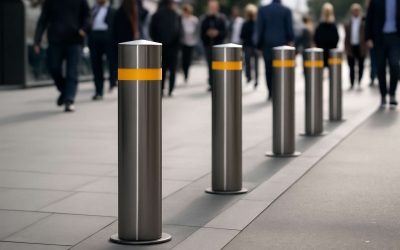
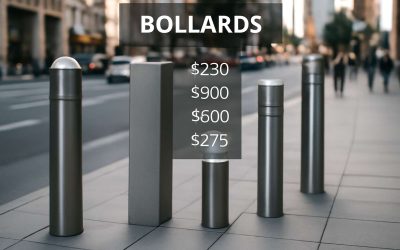
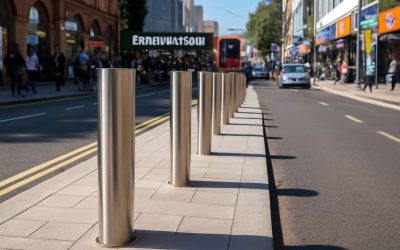
0 Comments